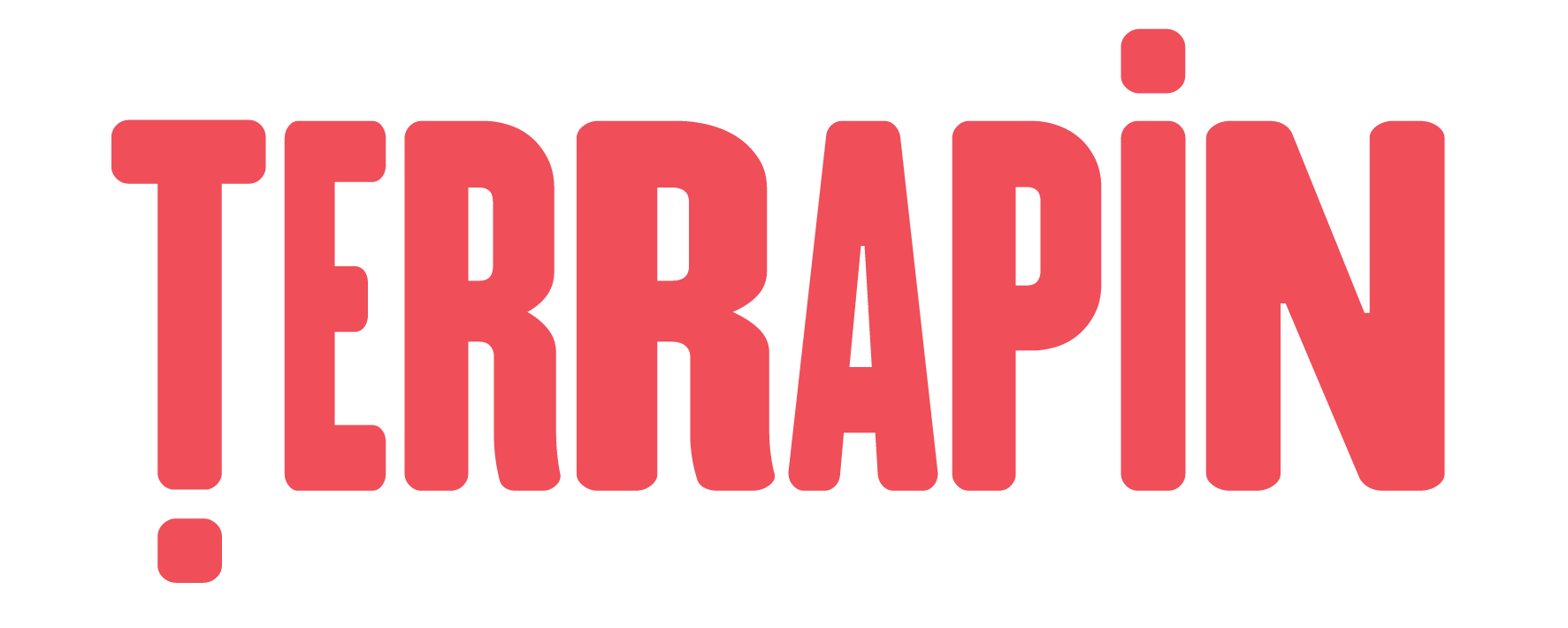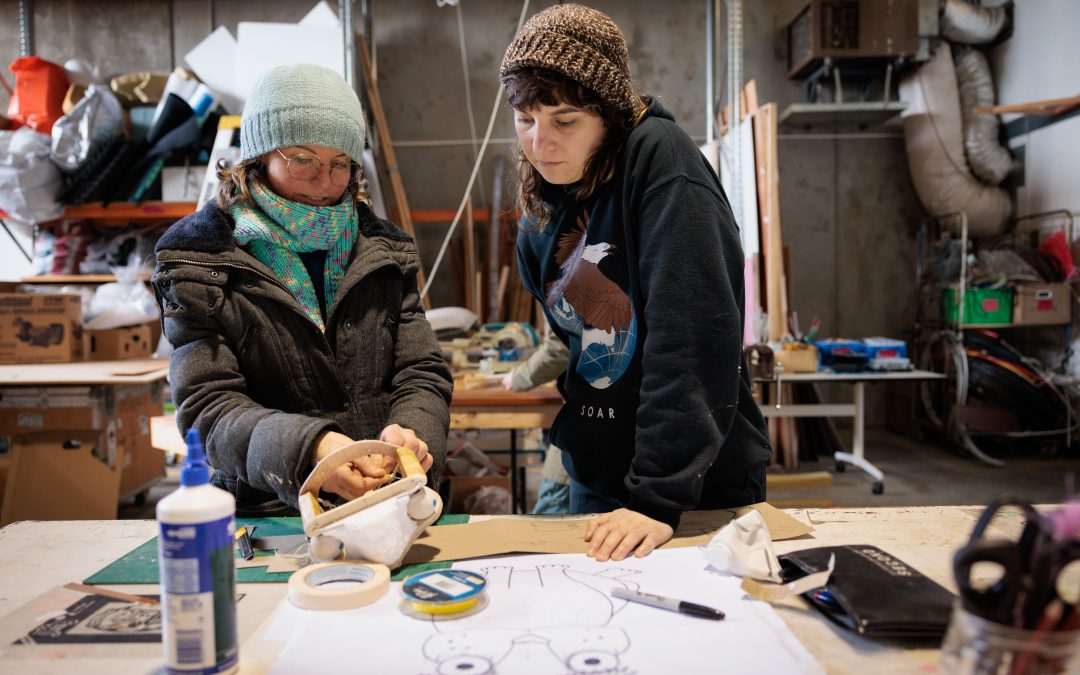For those who might not know, Terrapin Puppet Theatre was founded in 1981 by the late Jennifer Davidson. Today, the Jennifer Davidson Creative Endowment, established by Jennifer’s sons Andrew and Neil, supports an emerging creative professional through a 12-month hands-on traineeship. In 2023, the selected creative was Mads Hillam who through the last 12 months has worked in the workshop alongside master puppet-maker Bryony Anderson.
As the traineeship comes to a close — though not marking the end of her time at Terrapin — we’ve asked Mads to reflect on the experience.
What did the creative traineeship look like on a day-to-day basis?
(MH) So, my year-long placement at Terrapin has been under the mentorship of Bryony Anderson, who was the lead maker in 2023. Typically, my schedule involved two days a week based in the workshop, but there have also been several opportunities to head into the Salamanca office and assist in rehearsals. During those rehearsals, mostly for The Riddle of Washpool Gully or The Paper Escaper, I helped source materials, purchase props, and assist with technical requirements, at times even moving the sets from the workshop to the rehearsal space.
When I first started, I participated in a five-week intensive course written by Bryony, which allowed for a group of makers to come in and learn the entire puppet build process – from the initial analysis of a children’s story book through to design and construction – and in the end we filmed all the scenes of the book.
It was such an intense taste test of what I was about to experience from the puppet making role! It was such a big brain expansion! For me, there were skills I hadn’t really had before that I had to pick up, and you’re always having to think steps ahead in puppet making, basically so you’re not metaphorically painting yourself into a corner in your construction.
Tell us a bit about your background and why this creative traineeship appealed to you?
(MH) I’ve always had a keen interest in art, movement, and theatre, and I’ve spent a lot of time performing and taking as many creative courses as I could. I remember seeing a puppet show when I was quite young, before I started school, that truly captivated me. It was a production of Possum Magic, and then there was another, The BFG. These are both memories that have stayed with me, and perhaps without fully realising it, I’ve always been searching for something that offered the same kind of creative expression. Puppetry ticks all the boxes for me: storytelling, character building, movement, funny voices, and skill!
For me, it’s really this meeting of storytelling with sculpture, and I still get the same reaction watching puppets moving now as I did watching them move for the first time – and that’s really fun to realise!
What were you most excited about walking into the role?
(MH) I was really excited about learning mechanisms and soft sculptural techniques, as well as being really excited to learn from Bryony. I’d seen some of her videos and images of her work and then for sustainability to be at the forefront of the organisation was just an exciting extra layer. I remember thinking [Terrapin] are making these world-class puppets and they’re doing it by finding stuff from the tip shop. So I was really excited to meet her and learn how she can create something with longevity like that.
What’s been your proudest achievement whilst being the creative trainee?
(MH) Dealing with imposter syndrome… so, haha, NO!
I feel like my proudest achievement is yet to come. Can I say that? I believe it’s going to be the Duck puppet for ‘Feathers’ [Terrapin’s 2024 school touring production] because I worked with Bryony to make the prototype, and it’s going to be a really lovable character! I’m really excited about working on the mechanism and seeing its eyes come alive. Oh, and working on its final skin texture—how am I going to make it look like a real duck, but bold?
I think I’ll be really proud of that because it’ll be the culmination of all the things I’ve learned in the last twelve months. It will be one of the first puppets for Terrapin that I will have made from start to finish, just in time to hand over to the puppeteers for the creative development.
What’s been the biggest hurdle you’ve needed to overcome?
(MH) Imposter syndrome! Overthinking things!
I can wind myself up overthinking. For example, at the beginning of the traineeship, I remember standing at the bench, overthinking an eye mechanism because I had to transform a drawing into a 3D object.
Basically, you’ve got the skeleton that houses the mechanism, but then there are all the moving parts that you have to make sure you have clearance for. I’ve learned that even if I’m not certain something will work, I eventually have to commit to a decision. And, that’s challenging because if it doesn’t work and I’ve moved onto the next thing, I might not easily be able to access the last thing that didn’t work.
What does completing a puppet build from start to finish really look like?
(MH) Well, I’m only like one year into puppetry, so this is what I currently know…
Building a puppet from start to finish looks like beginning with the character of the puppet, and the scale of it – and then thinking about what movements you want to be able to create with it.
Second to that is considering your puppeteer, that’s so important because the performer has to bear the weight, be able to see and not feel fatigue when on tour – so visibility, ergonomics and function are really important to consider.
But, back to design – in your initial sketches you might use an overhead projector, a trick Bryony taught me, to work out the scale in your first drawings – then we start prototyping with cardboard before building the actual puppet skeleton and mechanisms – which make the puppet meet the functions it has to be able to do.
Then you’re onto sculpting/skinning/finishing, but this is an incredibly sped up timeline! These three steps give your puppet their character, they’re looks!
Oh and the carry case – that’s so important! If it has to tour and move from venue to venue a custom made bag of box could be needed.

